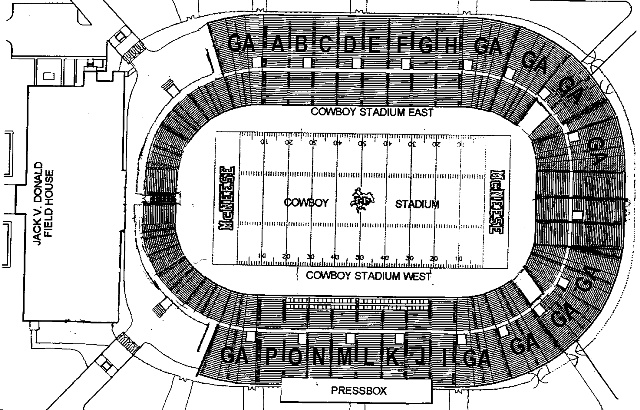I have copied a Practical Heat Stress Calculator below that I use to help my workers plan for potential heat stress related illness before each days work. sorry it didn't copy from excel to this website very well, but you can see using last years heat and humity figures at 8
M cst (an hour after the game started that the adjusted heat index for Lake Charles was 132 °F. Thank God we were in Tampa, where they have wind.
No wind down in "The Hole"
This program took into account the recorded conditions last year;
* Tempature at 8
M; (87 °F)
* Humity at 8

m; (80%)
* Solar load (The first hour will be under the sun); (Light)
* Worker Acclimation; (Not acclimated)
* Type of activity/workload (Strenuous )
Task Identifier For the Gulf Coast for September 1, 2006
Physical Parameters of the Task and Environment (Actual or Simulated)
Calculated Parameters of the Heat Stress Model
Heat Index (°F) 102
Heat Index adjustment due to workforce acclimatization + 10°F
Heat Index adjustment due to impact of PPE or other clothing + 0°F
Heat Index adjustment due to the physical workload + 5°F
Heat Index adjustment due to the solar load + 15°F
Heat Stress Interpretation
Adjusted Heat Index = 132 °F
HIGH RISK - Adjusted Heat Index more than 130°F (54°C). Heat stroke very likely Adjusted Heat Index more than 104°F (40°C) and less than 130°F (54°C). Heat cramps or exhaustion likely. Heat stroke possible
Severe Heat Illness Risk Level = High
Recommended Actions
Reschedule activity to a time when the adjusted heat index is lower or find other means to reduce heat load
Allow workers time to acclimate
Reduce the level of physical effort involved in the task
Shade the employees while working and resting
Notes on the Use of this Tool
When measuring Dry Bulb Temperature, be sure to measure the temperature at the point work is being performed in case a heat source greater than ambient temperature is collocated to the work area and impacting the crew.
Individual reactions to heat will vary. Risk levels are determined based upon the responses to heat stress of average males of average fitness level. Individual differences may increase the risk levels and should be considered when evaluating the heat stress risk level.
Chart provides guidelines for assessing the potential severity of heat stress. This chart is not meant to replace heat stress assessments using Wet Bulb Globe Temperature Index or Required Sweat Rate. If the appropriate psychometric measuring capabilities are available, then they should be considered for use and the results considered more accurate than those obtained from the above methodology
References
U.S. National Weather Service
U.S. NIOSH Publication 86-113 “Occupational Exposure to Hot Environments”
HSE RESEARCH REPORT 008 – “The development of a practical heat stress assessment methodology for use in UK industry”, Damian Bethea & Ken Parsons, Department of Human Sciences, Loughborough University
U.S. Army CHPMM – Heat Stress Assessment


